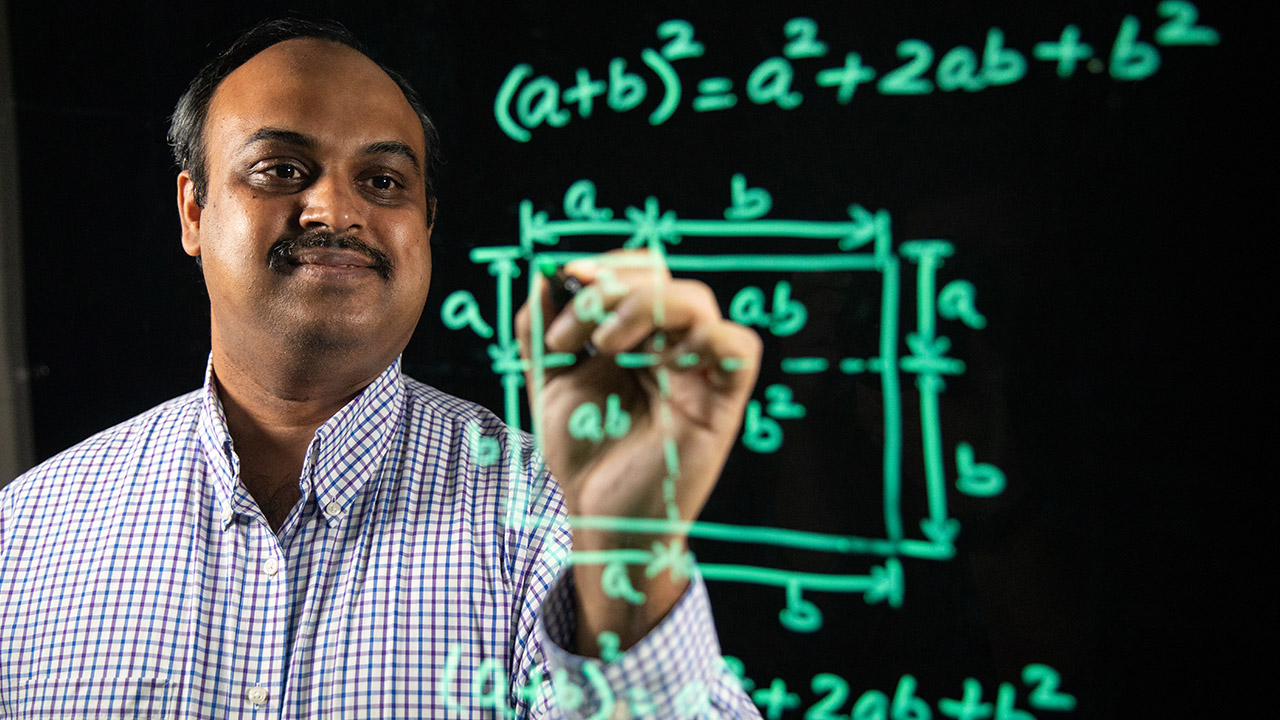
Dr. Vettrivel Gnaneswaran is an assistant professor of industrial engineering, with research and teaching interests in biomechanics, statistics, quality control, supply chain, engineering management and engineering education. He is currently working on a Wisconsin Space Grant Consortium-funded research project, with 20 students, to quantify the perceived finger forces with glove use. Additional research projects he is developing include the biomechanical modeling of text-messaging using smartphones and the ergonomic redesign of a one-handed video game controller.
How did you first gain an interest in the field of industrial engineering?
I am fascinated with the science behind the human body and aspired to become a physician after high school. I failed the MCAT and pursued mechanical engineering. During my senior year, I worked as a manufacturing engineering intern. One of the projects was to automate a production line to help the shop-floor employees. Observing my knowledge about the human body and my engineering acumen, the project manager asked me to investigate ergonomics on the last day of my internship. I had never heard about ergonomics until then. My research about ergonomics attracted me to it, as it was the perfect marriage of my fascination and skills. My graduate education in industrial engineering with a specialization in ergonomics gave me a different perspective on how to use knowledge to enhance the quality of life.
You are a certified Lean Six Sigma Black Belt; how does this add value to your role in the field of industrial engineering – and what principles of this certification do you try to impart on your students?
Let me first clarify that Lean and Six Sigma are two different thought processes. Lean emphasizes waste reduction and Six Sigma is a continuous improvement problem-solving framework. The experiences and trainings to become a certified professional have allowed me to have a holistic approach with an attention to details when I solve real-world problems. I try to simulate my real-world experiences in all my classes, so students are prepared when they enter the workforce. A key principle of Lean is to take ownership. I encourage my students to own the course materials by making them develop their assignment rubrics in the first week of classes with me.
What do you hope students take away from your classes?
Tapping into my spiritual belief, I strive to become an abode of knowledge and hope the students who interact with me are enlightened and become future leaders.
You worked in industry prior to teaching; what is it that you most enjoy about teaching and higher education that keeps you doing it?
I worked with different industries including manufacturing, pharmaceuticals, technology and healthcare as a part-time engineering consultant. I have taught a range of courses in both industrial and mechanical engineering curriculums from freshmen to seniors. I enjoy interacting with students and the mutual learning process which motivates me to do what I’m doing. I take pride in being a rung in the student’s academic and professional ladder.
COVID-19 has made it necessary to be innovative in rethinking the way students are taught, and using new technology — for example, the learning glass technology you implemented on campus. How was this new technology received, and what other ways have you found to successfully adapt to this situation?
The COVID-19 pandemic provided us an opportunity to explore newer teaching methods. The learning-glass technology was very well received by my students. Some comments were:
“I liked viewing the lightboard lecture better than some of the other lectures. It was easier to follow along since I could actually see you writing as you went through the problem, and it was not just using the draw function over the PowerPoint slides. It felt more like a normal class, which is ideal since I do not have any in person this semester. I would enjoy seeing more lightboard use in the future.”
“I really liked it. It’s nice that you have that sort of technology available, especially during times like this when we can’t meet in person.”
In addition to the technological interventions, I transformed many in-class activities into kitchen-sink type activities to provide the hands-on learning. For the first-year GENENG 1030 course, I used work sampling methods to capture the student’s non-productive times and made them reflect. Many students were pleasantly surprised with this activity as it provided them a different perspective of time management. Another adaptation was the use of asynchronous lectures with project-based learning and mandatory bi-weekly synchronous meetings. Many students appreciated this approach as it provided them the flexibility while maintaining the rigors of the curriculum.